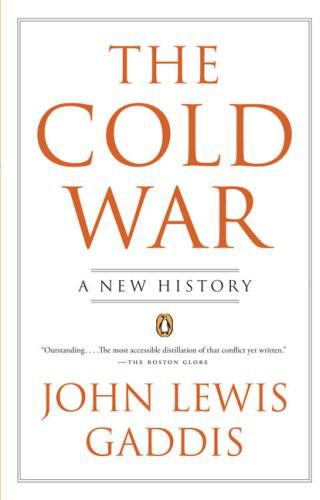

Most ebook files are in PDF format, so you can easily read them using various software such as Foxit Reader or directly on the Google Chrome browser.
Some ebook files are released by publishers in other formats such as .awz, .mobi, .epub, .fb2, etc. You may need to install specific software to read these formats on mobile/PC, such as Calibre.
Please read the tutorial at this link: https://ebookbell.com/faq
We offer FREE conversion to the popular formats you request; however, this may take some time. Therefore, right after payment, please email us, and we will try to provide the service as quickly as possible.
For some exceptional file formats or broken links (if any), please refrain from opening any disputes. Instead, email us first, and we will try to assist within a maximum of 6 hours.
EbookBell Team

0.0
0 reviewsGregory and Sklar, reading Yale history professor Gaddis's study of the American-Soviet standoff, give voice to their inner television announcer, their twin brands of masculine sonorousness verging on virile parody before settling comfortably on the side of familiar voice-over solidity. Gaddis's work unravels the tangled threads of the Cold War, from the tense Allied conferences at the end of WWII to the Korean War and onward, and his book's readers give it the sensation of every word being carefully cultivated and primped before being spoken. If this leads to some of the immediacy, the heart-in-throat sensation, of the events described being diluted, so be it, for Gregory and Sklar give Gaddis's book the grandeur its subject matter so richly deserves. Sounding more professorial, in the I-play-an-Ivy-League-professor-on-television sort of way, than the good professor himself, Gregory and Sklar do an admirable job of making Gaddis's learned words their own.
Copyright © Reed Business Information, a division of Reed Elsevier Inc. All rights reserved.
Gaddis, professor of history at Yale and the Cold War’s preeminent historian, delivers a concise, readable introduction to an era about which Americans have increasingly little recollection. The author has had the somewhat unusual opportunity to examine his period of expertise both from within—in his books Strategies of Containment (1982) and The Long Peace: Inquiries into the History of the Cold War (1987), for instance—and now, with the benefit of new archival documents and hindsight, as a series of historical events. Although the relative brevity of the volume might suggest that Gaddis values concision over detail, the study gives new focus and meaning to one of the United States’ watershed periods.
Copyright © 2004 Phillips & Nelson Media, Inc.